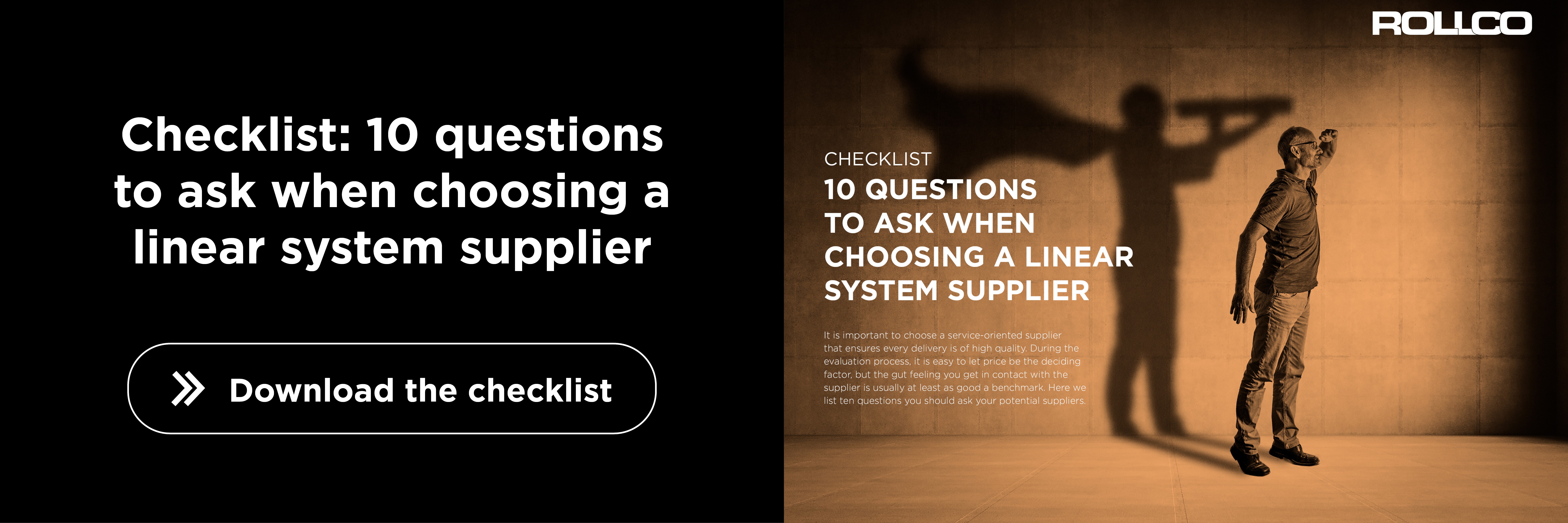
When it comes to components for linear systems, there are many different manufacturers and suppliers. Navigating among these and finding the one that meets your requirements is not always a simple task. But by choosing components that are directly interchangeable with other manufacturers, so-called open standards, you ensure that you do not lock yourself in or tie yourself to a single manufacturer.
Easier to change components in linear systems with an open standard
A component based on an open standard is usually replaceable with a comparable one regardless of the brand. However, some manufacturers have developed their own standards. For example, a rail guide block with a special height could be impossible to replace with any other option. Using this type of special component creates a lock-in effect, where no part of the construction can be replaced with products from another supplier.
It can lead to a higher life-cycle cost because you must replace the entire solution if you want to change suppliers. You avoid this by choosing an open standard.
The components are often in stock
An advantage of components that have an open standard is that the supplier always has them on stock, at least those that have a large inventory. It is usually quick and easy to replace any component if needed.
Components that are specially made and not compatible with others have a limited number of suppliers. In some cases, they are only available through the company that developed them, creating the risk of limited availability and delivery delays.
It is crucial to consider that, for example, blocks and rails are parts of a system and are not interchangeable with other systems. You cannot put one manufacturer's block on another's rail. An additional example is ball screws, where you must use the same brand on nuts and screws.


